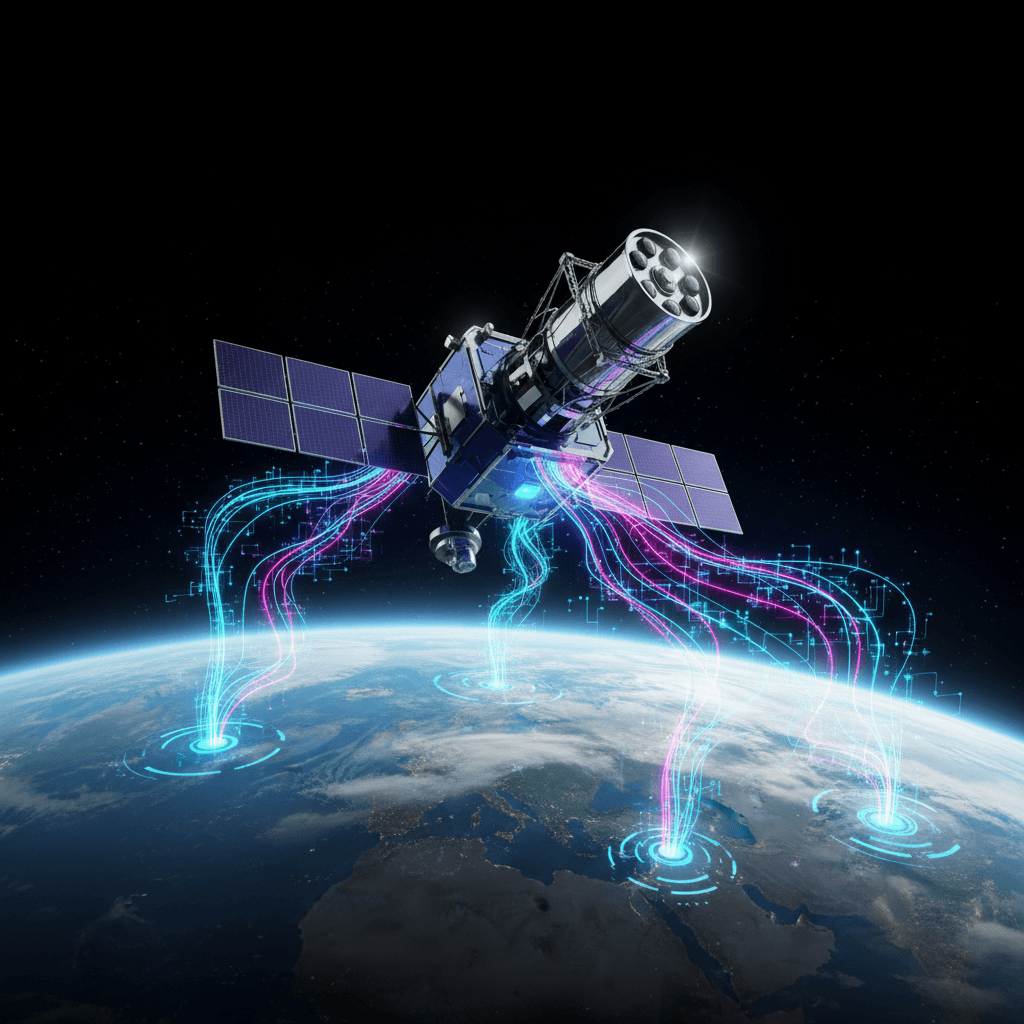Indian Startup EON Qualifies MIRA Space Telescope, Integrates On-Orbit AI.
India's compact AI-powered space telescope passes NASA-grade tests, ready to redefine in-orbit data processing for defense and commerce.
November 25, 2025

In a significant leap for India's private space industry, a Hyderabad-based startup has successfully prepared a miniaturized space telescope for its inaugural flight. EON Space Labs announced that its ultra-lightweight telescope, named MIRA, has passed stringent thermo-vacuum testing, a critical milestone that qualifies the hardware for the harsh conditions of space according to NASA-grade standards. This achievement paves the way for a test launch scheduled for December 2025, in a collaborative mission with fellow Hyderabad startup TakeMe2Space. The success of MIRA not only represents a pivotal moment for domestic manufacturing of high-precision space instruments but also highlights the growing synergy between space technology and artificial intelligence, promising to enhance capabilities in both defense and commercial sectors.
The MIRA telescope is a testament to the innovation burgeoning in India's deep-tech startup ecosystem. Developed by EON Space Labs, founded in 2022 by Sanjay Kumar, Punit Badeka, and Manoj Kumar Gaddam, the electro-optical payload is engineered to deliver high-resolution imagery from a remarkably compact and lightweight package, weighing just over 500 grams.[1][2] This is a significant reduction, up to three or four times lighter than traditional telescopes, without compromising image quality.[2][3] The key to this miniaturization lies in its monolithic optical design, where the instrument is crafted from a single piece of fused silica glass, a space-qualified material.[4][3] This innovative approach, developed with strategic partner HHV Advanced Technologies, eliminates the need for complex assemblies and moving parts, thereby reducing weight and enhancing structural stability.[5][3] To ensure its readiness for orbit, MIRA underwent exhaustive testing at a NABL-accredited facility in Ahmedabad.[1] The thermo-vacuum tests simulated the extreme environment of low Earth orbit, subjecting the telescope to vacuum levels below 10⁻⁵ torr and temperature fluctuations ranging from minus 20 to plus 60 degrees Celsius.[1] During these tests, the telescope successfully performed imaging and telemetry tasks with its onboard computer, proving its operational viability and durability for space missions.[1] Co-founder Sanjay Kumar hailed the space-grade certification as a defining moment, proving that ultra-complex, high-precision imaging platforms can now be built and certified entirely within India.[1]
The upcoming mission in December 2025 is particularly noteworthy for its integration of advanced artificial intelligence, a collaboration that could redefine in-orbit data management. MIRA will be a payload on a satellite mission flown by TakeMe2Space, another Hyderabad-based startup that is launching what it calls India's first AI laboratory in space.[1][4][6] The primary challenge with Earth observation satellites is the sheer volume of data they collect, much of which must be transmitted to ground stations for processing, a costly and time-consuming endeavor. TakeMe2Space aims to solve this by enabling real-time data processing directly in orbit.[7] Their platform, which includes an AI accelerator, allows users to upload AI models to the satellite via a web-based console called OrbitLab.[8][9] This "satellite-as-a-service" model means that the high-resolution images captured by MIRA can be instantly analyzed in space. The AI can be programmed to detect specific objects or changes, such as monitoring deforestation, tracking maritime activity, or identifying threats for defense surveillance.[10][7] By processing data on the edge, the system can prioritize and transmit only the most relevant insights, drastically reducing latency and data transmission costs.[7] This synergy between EON's advanced optics and TakeMe2Space's on-orbit AI computing power represents a significant step forward, aligning with EON's goal of building dual-use optical systems powered by an AI-enabled stack for both space and aerial missions.[1]
This milestone achievement by EON Space Labs and its collaboration with TakeMe2Space is emblematic of the rapid growth and maturation of India's private space sector. For decades, the Indian space program was dominated by the state-run Indian Space Research Organisation (ISRO). However, reforms introduced in 2020, including the establishment of the Indian National Space Promotion and Authorisation Centre (IN-SPACe), have opened the doors for private companies to participate across the entire value chain.[11][12] This has spurred a wave of innovation, with over 200 spacetech startups now contributing to launch vehicles, satellite development, and data analytics.[11][13] The success of the MIRA telescope is a direct challenge to India's historical dependence on imported high-precision optics and sensors from countries like the US, France, and Israel.[5] By focusing on in-house design and indigenous manufacturing, companies like EON are bolstering the 'Make in India' initiative, reducing costs and strategic vulnerabilities while simultaneously building export potential.[5] This burgeoning ecosystem, fueled by recent venture capital funding, is poised to significantly expand India's share of the global space economy, which is projected to grow to $44 billion by 2033.[2][11][14]
In conclusion, the successful qualification of the MIRA space telescope is a landmark achievement for EON Space Labs and a powerful indicator of the capabilities emerging from India's private space industry. The telescope's innovative lightweight design and its successful endurance of NASA-grade testing underscore the nation's growing self-reliance in creating complex, space-qualified hardware. The forthcoming launch with TakeMe2Space's orbital AI lab promises to be a groundbreaking demonstration of in-space data processing, a capability that will have far-reaching implications for the efficiency and application of Earth observation in both the commercial and defense intelligence sectors. As the December 2025 launch approaches, it is viewed not just as a test flight for a new piece of hardware, but as a flight heritage mission that will boost confidence among satellite manufacturers and pave the way for entire constellations of compact, intelligent Indian imagers in the sky.[5] This single mission encapsulates the broader ambition of a nation determined to become a true superpower in the global space and technology landscape.